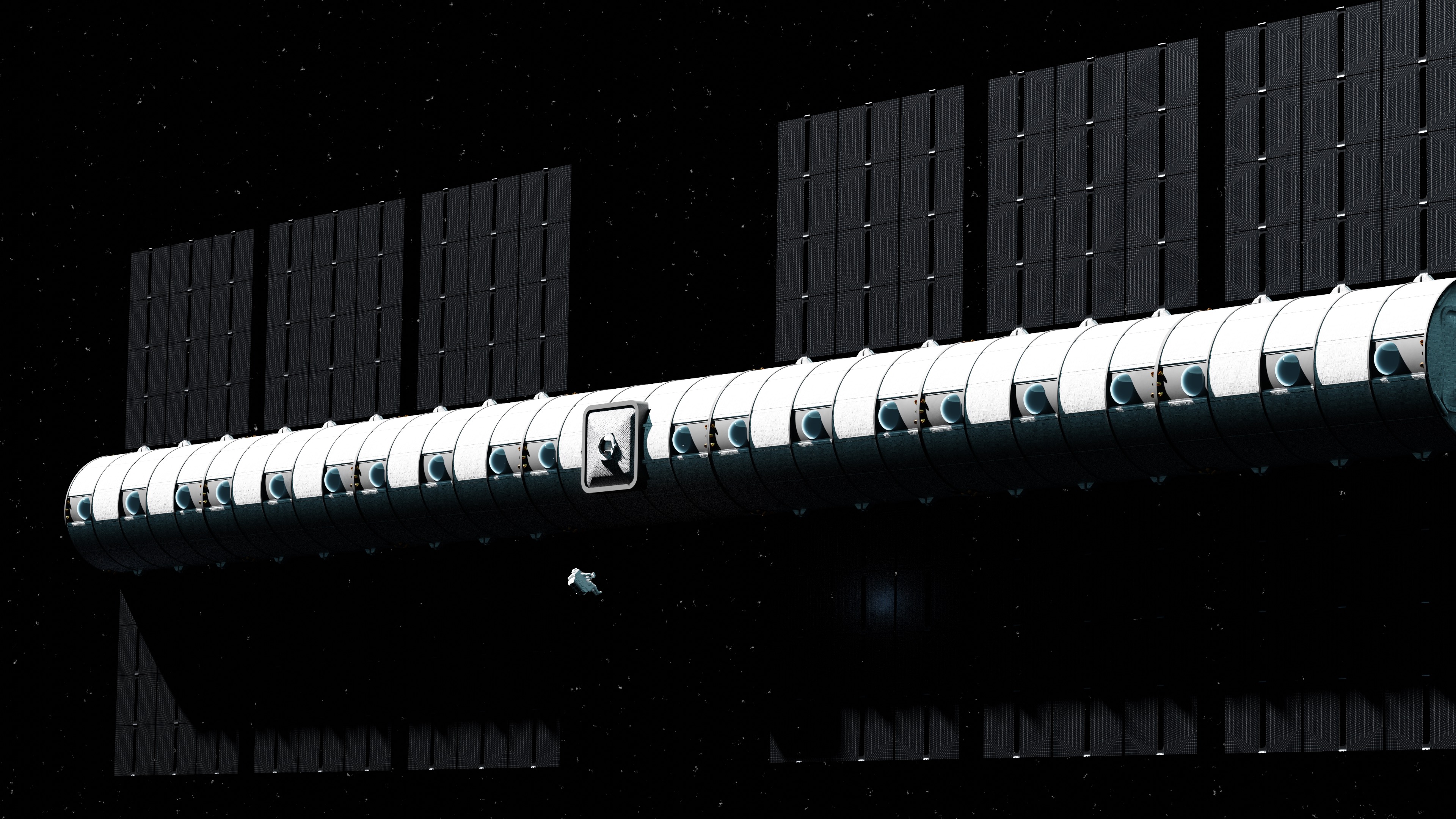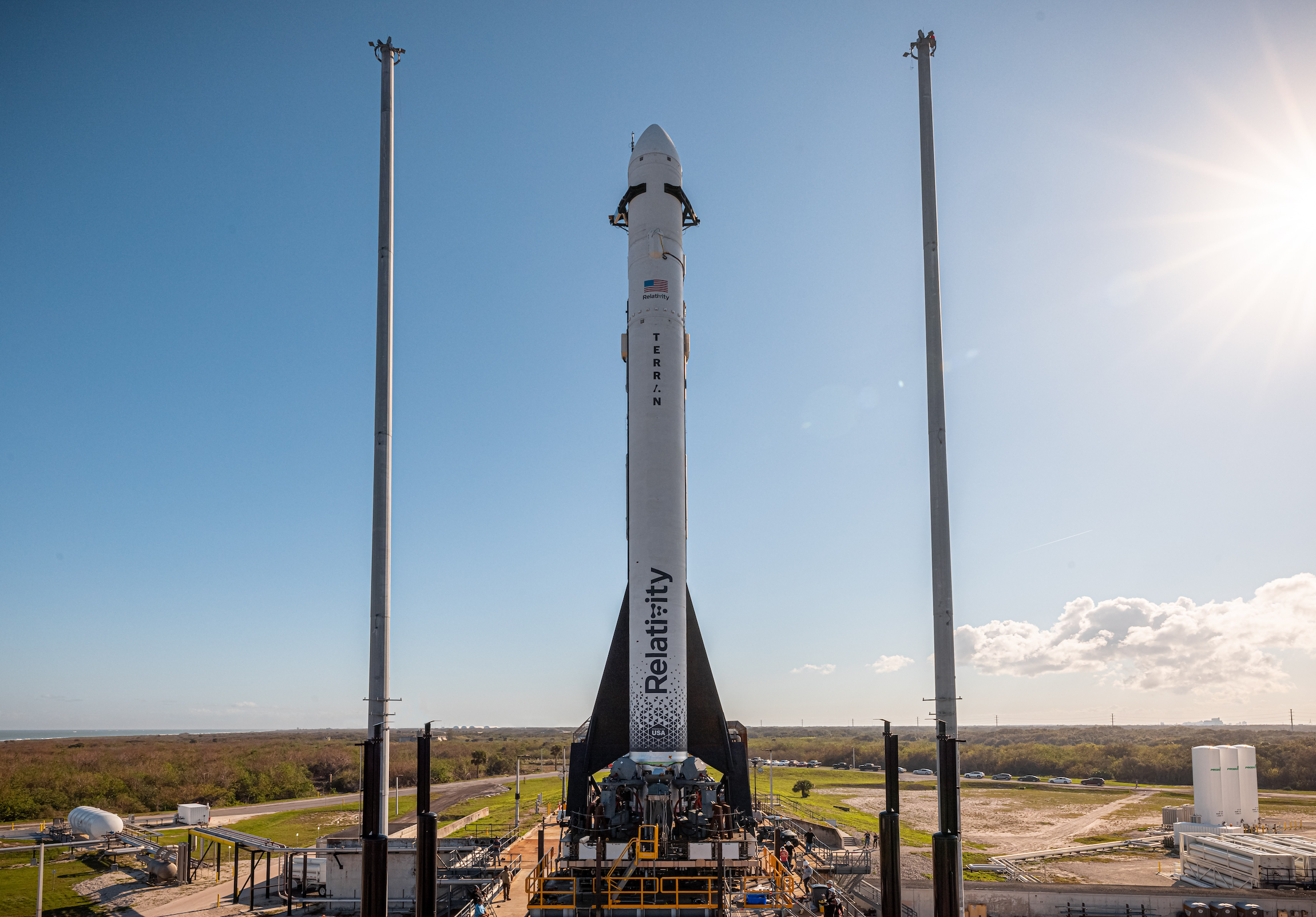Hello and welcome back to Max Q! Today we’re thinking of the four astronauts heading to the International Space Station. See you guys soon!
In this issue:
- Artificial gravity space station startup Vast makes its first acquisition
- Relativity Space sets a launch date
- News from Momentus, United Launch Alliance and more
Vast acquires Launcher in quest to build artificial gravity space stations
Vast Space, a company that emerged from stealth last September with the aim of building artificial gravity space stations in low Earth orbit, has acquired space tug startup Launcher.
The acquisition, a first for Vast, will give the company access to Launcher’s Orbiter space tug and payload platform and its liquid rocket engine, E-2. Under the terms of the deal, Vast will also absorb all of Launcher’s talent, including Launcher founder Max Haot, who will join as president.
The deal could be a big accelerator for Vast; the company’s founder, billionaire crypto pioneer Jed McCaleb, said Vast will use the Orbiter tug to test space station subsystems and components in orbit as soon as June of this year, and then again around October. More generally, McCaleb said that acquisitions are not part of Vast’s larger strategy. “Acquisitions typically go pretty wrong,” he said. “For the most part, the combined team now plus a few more folks, we’ll be able to do quite a bit.”

Vast Space station. Image Credits: Vast Space
Relativity Space sets March launch date for Terran 1
Relativity Space has finally received its launch license from U.S. regulators, clearing the way for the company’s first-ever orbital flight attempt on March 8.
Relativity will be attempting to send its lightweight rocket Terran 1 to orbit for the first time, in a demonstration mission that will not carry any customer payloads. The company is quick to point out that, at 110-feet tall and 85% 3D-printed by mass, Terran 1 is the largest 3D-printed object to attempt orbital flight and the largest 3D-printed object to exist, period. Sending it to space will be no small feat, and indeed, this flight will see Relativity’s 3D-printed architecture and approach put to the test for the first time.
You’ll be able to watch a livestream of the launch on YouTube or via Relativity’s website.

Relativity Space Terran 1. Image Credits: Relativity Space
More news from TC and beyond
- Kreios Space, a startup developing an electric propulsion system for very low Earth orbit, landed a new investment from Swiss investment firm SpaceQuest Ventures. (SpaceQuest)
- Momentus released a slew of news this week: It announced three missions for 2023; a $10 million investment; that it was settling a lawsuit for $8.5 million, of which around $4 million is expected to be paid by insurance; and that its Vigoride-5 spacecraft is in good health. (Momentus/Momentus/Momentus/Momentus)
- Payload’s Mo Islam offered a really smart prediction of SpaceX’s 2023 revenue, adding that he expects a Starlink IPO is likely over the next 18-24 months. (Payload)
- Polaris Dawn, the first private spaceflight mission of billionaire Jared Isaacman’s Polaris Program, is now scheduled to launch this summer. (Polaris)
- SpaceX is changing prices for Starlink residential customers, raising prices in some “limited capacity” areas but lowering prices in “excess capacity” areas. (CNBC)
- Terran Orbital scored a $2.4 billion contract to design and build 300 satellites for Rivada Space Networks, which will be paid out via “milestone payments,” according to filings. (SEC)
- Texas Governor Greg Abbott wants to establish a Texas Space Commission, and is requesting $350 million from legislators to fund the commission for two years. It’s unclear how that money will be spent. (Ars Technica)
- Samsung is planning to integrate cell phone-to-satellite tech into its line of “Exynos” modem processors, and presumably to future smartphones. (Samsung)
- United Launch Alliance is targeting May 4 for the debut launch of its Vulcan rocket, CEO Tory Bruno told reporters on a call.
Max Q is brought to you by me, Aria Alamalhodaei. If you enjoy reading Max Q, consider forwarding it to a friend.
Max Q: It’s the final countdown by Aria Alamalhodaei originally published on TechCrunch
source https://techcrunch.com/2023/02/27/max-q-its-the-final-countdown/
Comments
Post a Comment